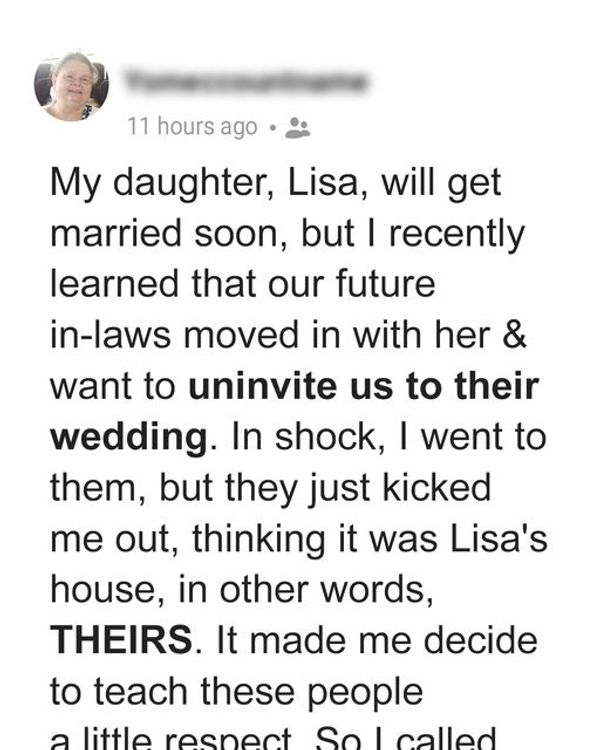
Anna, a proud mother, always dreamed of being present for all of her children’s important life events, including their weddings. When her eldest daughter, Lisa, got engaged, the whole family was excited. Lisa and her fiancé decided to host a party with their future in-laws to celebrate their upcoming wedding. It was meant to be a joyous occasion, a chance for both families to bond and share in the happiness of the engaged couple.
However, as the party unfolded, Anna sensed tension and discomfort among her loved ones. Something seemed off. Anna’s husband and her other children appeared upset. Concerned, Anna approached her husband to find out what was going on. Reluctantly, he shared that they overheard a conversation between Lisa and their future in-laws. It was revealed that Anna and her family were not included on the wedding guest list.
Anna was stunned and hurt. She couldn’t understand why Lisa, her own daughter, would make such a decision without discussing it with her parents. The thought of not being present at her daughter’s wedding shattered Anna’s heart. Determined to address the issue, she decided to visit her future in-laws the next day.
Unfortunately, Anna’s visit was met with a cold reception. Lisa’s future in-laws, mistakenly believing that Lisa owned the house, refused to let Anna inside. Anna knew that she and her husband were the actual homeowners, but the misunderstanding had created a barrier between the families.
Anna’s attempts to explain the situation fell on deaf ears. Lisa’s future in-laws insisted that Lisa had the final say, leaving Anna unsure of her role in her daughter’s wedding. As Anna left their home, she felt a mix of frustration and sadness. The misunderstanding had strained their relationship, and Anna knew she needed to find a way to rectify the situation.
Anna understood that open and honest communication was key to resolving the misunderstanding and reestablishing the bond between both families. She was determined to ensure that her family could be a part of Lisa’s special day. Inclusion was important, and Anna believed that it was crucial for families to come together during milestones like weddings.
By addressing the issue head-on and seeking understanding, Anna hoped to bridge the gap and create a wedding celebration where both families could share in the joy and love. Clear communication and a willingness to listen and understand were essential in overcoming the misunderstandings that had caused such tension.
In the end, Anna’s commitment to resolving the situation highlighted the importance of inclusivity in family events. She knew that by fostering understanding and empathy, both families could come together to support and celebrate Lisa’s marriage, creating lasting memories for everyone involved.



